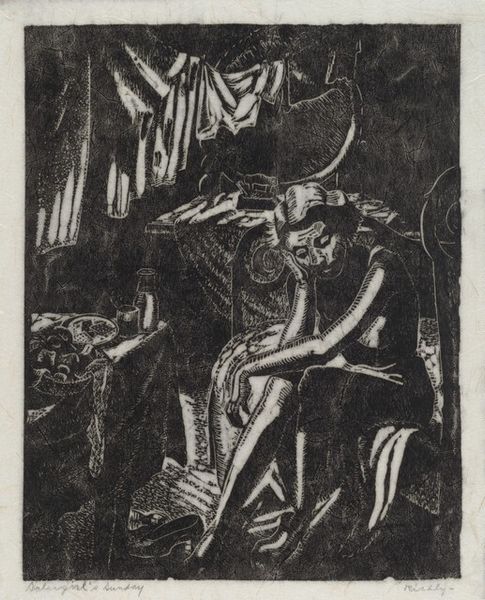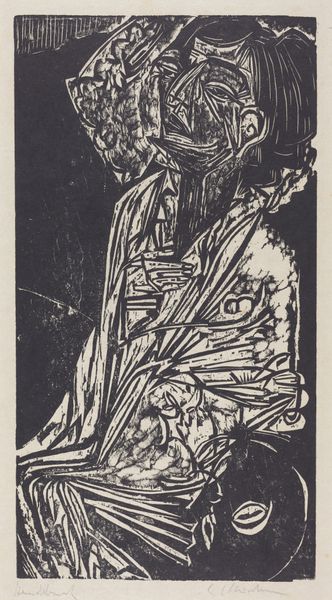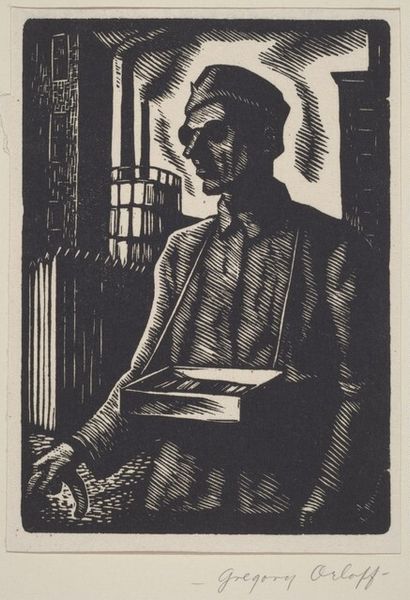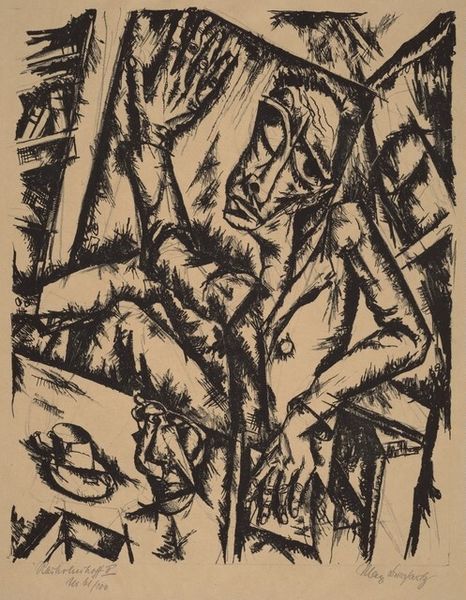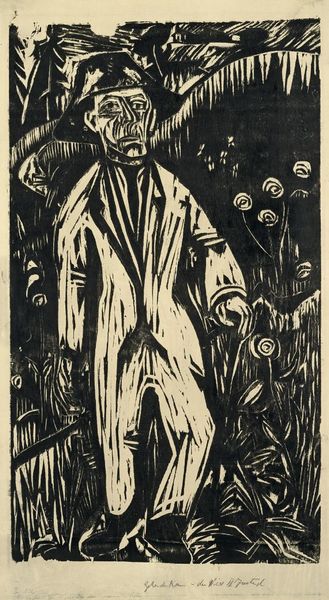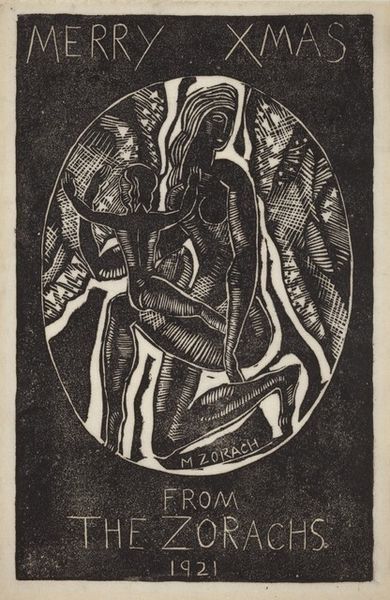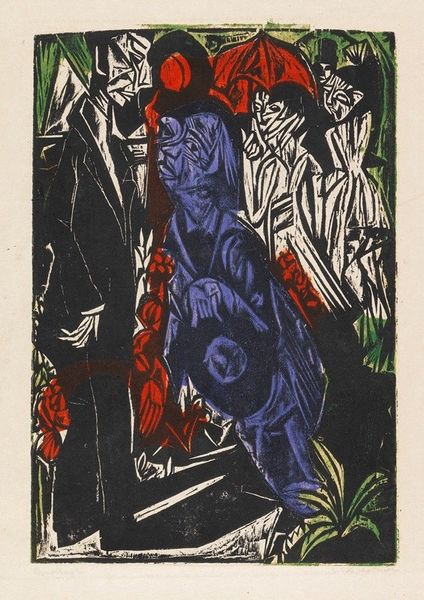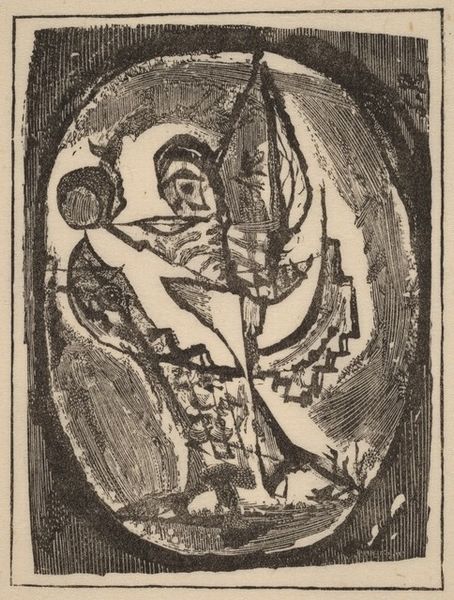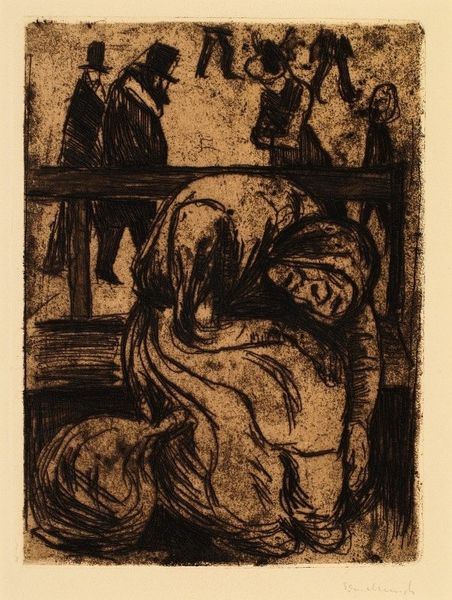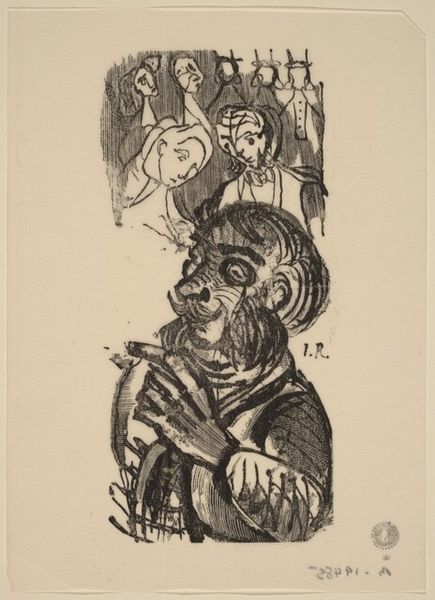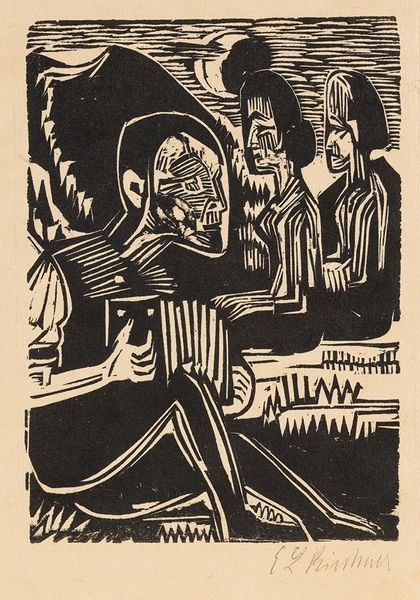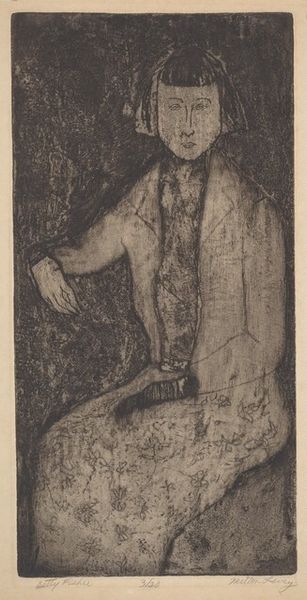
print, linocut, woodcut
#
portrait
#
abstract-expressionism
# print
#
linocut
#
landscape
#
linocut print
#
woodcut
Dimensions: image: 79.06 × 48.9 cm (31 1/8 × 19 1/4 in.) sheet: 87.95 × 58.1 cm (34 5/8 × 22 7/8 in.)
Copyright: National Gallery of Art: CC0 1.0
Curator: This haunting print, titled "Shepherd," is a linocut, or possibly a woodcut, by Irving Amen, created sometime between 1945 and 1955. Editor: The composition is striking! The sharp angles and high contrast create an atmosphere of tension and introspection. I immediately notice the textures produced by the medium. The gouges lend a rugged quality, fitting for the subject. Curator: Amen’s work is often concerned with archetypes. Here we see a solitary figure, likely referencing biblical narratives and the weight of responsibility placed upon pastoral figures within those stories. It might invite thoughts about moral burdens felt acutely in the post-war period. Editor: Indeed. But observe how the lines themselves—the formal elements—bear such weight! The density of marks in the background almost overwhelms the shepherd. Semiotically, this speaks volumes about the relationship between individual and environment. The staff, dividing the work nearly in half, serves not only to create figure and ground, but also presents a clear vertical structure that conveys a symbolic strength. Curator: Exactly! Consider, too, the context of Abstract Expressionism which emerged around this time. Amen brings the spiritual seeking of the era and layers it atop the plight and importance of the common man. We are urged to contemplate larger ethical and spiritual frameworks applicable to our everyday experiences. Editor: Yet I find it more interesting to observe how he plays with positive and negative space, directing the eye along diagonals and curves. This yields multiple points of entry. If we trace a Z from top left to bottom right, the viewer becomes aware of the meticulous cuts, even where color doesn't reside. Curator: Ultimately, Amen confronts us with enduring humanistic and moral problems relevant regardless of when we engage with the print. Editor: Agreed, even when the most pressing problems seem to come from our intrinsic need to decode structure, line, and shape! It shows how much an art piece relies on formal elements to convey more intricate, sometimes obscured meanings.
Comments
No comments
Be the first to comment and join the conversation on the ultimate creative platform.
